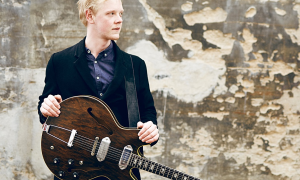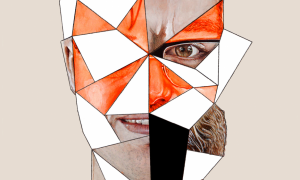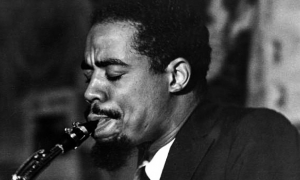Home » Jazz Articles » Hi-Res Jazz » Human Feel: Speak To It
Human Feel: Speak To It
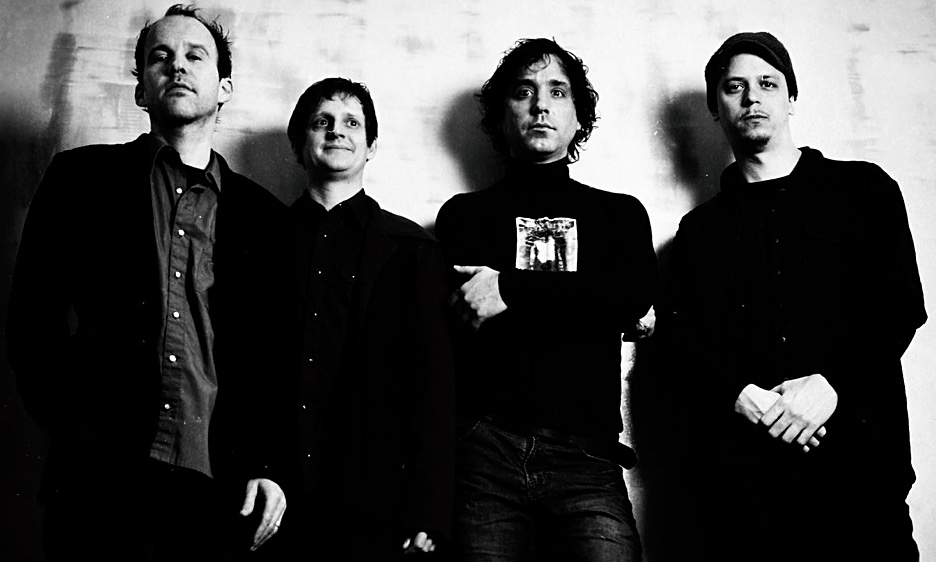
More than a quarter century after its initial appearance, a landmark album from the second wave of downtown NYC jazz reappears in a remastered hi-res release.
The emergence of chamber jazz as a genre can be traced to the innovative sextet sides recorded in the mid-1930s by bandleader John Kirby, and to the trio and small-ensemble post-war recordings of Benny Goodman. By the late 1940s, the term 'chamber jazz' was widely used in industry publications such as Billboard magazine, academic journals, and newspaper and magazine reviews of performances by small groups. A distinction was drawn between chamber jazz and big-band swing; these small ensembles played to listening, rather than dancing audiences, and bore a resemblance to classical chamber music groups. The term originated, and was understood, within the musical discourse of the time.
Today, there is no consensus about exactly what styles should be included in the genre. Chamber jazz can be defined by configuration: the absence of drums and the presence of orchestral instruments not generally used in jazz groups. It can be characterized by style: quiet and introspective, through-composed rather than song form or blues-based. You might hear traces of European classical music influences, or an embrace of global musical traditions. The term's meaning has changed as the music has evolved. In the 1950s chamber jazz referred to The Modern Jazz Quartet and Charles Mingus' Jazz Composers Workshop, but by the mid-1970s it resurfaced as a shorthand for ECM artists, and in subsequent decades, for thousands of musical productions worldwide.
The breadth of chamber jazz, its plurality of sources and methods, offers a direction for advancing the musical conversation across cultural and generational lines, and a lens for widening the scope of our own listening tastes.
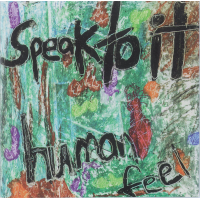 Human Feel
Human Feel Speak to It
Songlines
2022
Resolution: 24/192
More than a quarter century after its initial appearance, Speak to It, a landmark album from the second wave of downtown NYC jazz, reappears in a remastered hi-res release from the Vancouver label Songlines.
Songlines has supported chamber jazz for more than two decades. Label owner Tony Reif uses the term "creative chamber jazz" to describe albums of original compositions that incorporate contemporary trends in creative music within the framework of chamber jazz, and to convey the resemblance between these small ensembles and classical music groups. Over years of playing together, a distinctive sound emerges that makes a chamber jazz group identifiable.
The ties that bind musicians for three decades must be strong, and the creative process flexible, to allow for change and growth. Since their first album as a quartet in 1991, the members of Human Feel, reeds players Chris Speed and Andrew D'Angelo, guitarist Kurt Rosenwinkel, and drummer Jim Black have pursued separate careers as leaders and sidemen, but when schedules permitted, the band regrouped to produce new, vital and progressive recordings.
Speak to It was recorded by Joe Marciano to multitrack analogue tape at Systems Two, Brooklyn, in the Fall of 1995, and released by Songlines on CD in 1996. Many years later, Speed's move from New York to California led to an unexpected discovery of the original analogue stereo mixes. Reif, the executive producer of the album, committed to a reissue in hi-res. The analogue tapes were remastered at 24/192 by engineer and Songlines artist Chris Gestrin. The newly remastered album offers a window into New York's downtown jazz scene at its peak. In the opening bars of Speed's "Darker Joys," Human Feel's signature sound—horns blaring over busy guitar lines and polyrhythmic drum fills—sets the tone of the set: aggressive, even abrasive, self-confident but self-questioning. The title track "Speak to It," an arch-shaped composition by Black, shifts into calmer waters. The long lines for bass clarinet and tenor sax, reminiscent of Wayne Shorter's haunting melodies, are conducted with spare drum accents and complemented by quivering chords and bass-string guitar accompaniment.
D'Angelo's "Spaze" signals another direction in the band's book. The dryly humorous opening lines give way to off-rhythm noisy bursts that rip through the walls of form. D'Angelo's bass clarinet solo displays the full range of the instrument's wide register, not only of pitch but inflection. Overblown bass clarinet cries generate a coolly dispassionate response from Black's cymbals, leading into a dialogue between guitar and B flat clarinet, a clarinet soliloquy, and further group interplay. Marciano's skillful engineering and Gestrin's crystal-clear remastering allow the dynamics and shaded tone colors of all the instruments to be heard distinctly. As the other players drop out, Black's spare drum hits seem to fade into the gloomy distance.
Black's role in Human Feel goes beyond the traditional drum chair. As a composer-conductor, he lays the groundwork of the performance and leads the other three players along a zig-zag course. The opening of Black's "Not About You," speech-like murmurs of saxophone over subtle guitar noise, is suddenly interrupted by forceful drum strikes which call the band to order and introduce a softly-blown melody. Just when the unwary listener thinks the piece has properly begun, Black disrupts the mood with an aggressive rock-style accent-on-the-two-and-four drum pattern that prompts the actual head of this Frank Zappa-esque piece. This intentional disruption raises questions about how we expect "serious" music to sound. Speed's "Nimble Demons" follows a similar strategy of feint and delay; passages of what sound like free improvisation unexpectedly morph into a distinguishable head statement, which quickly pulls itself apart and opens space for D'Angelo's wrenching bass clarinet solo.
The wall between reinterpretation and deconstruction is breached in the band's performance of Mal Waldron's jazz standard "Left Alone." Accompanying the vocals of Holly Palmer, whose phrasing is reminiscent of Rickie Lee Jones, the instrumentalists weave subtle and sometimes contradictory counter-lines in and out of the foreground. The group's dynamic is expressed in different ways by each composer. Black's "Tic Tics" sets Rosenwinkel's shimmery sustained chords as a backdrop to a three-way conversation among Speed, D'Angelo and Black. D'Angelo's "Hey, Roma ain't Vein" blurs the boundary between composition and improvisation to the point where it's difficult to imagine how any other ensemble could properly play it. The elements of the compositions seem to grow organically from the band members' lines of connection, perfected over years of living and rehearsing together.
When the parts are as individually distinctive, creative and accomplished as the members of Human Feel, the whole is not greater than the sum of its parts, but equal to it. Such equality is a rare thing in any musical ensemble.
Track Listing
Darker Joys; Speak to It; Spaze; Not about You; Nimble Demons; Left Alone; Tic, Tics; Eno Eva Yood Nodi; Hey Roma ain't Vein; Cat Teachers.Personnel
Jim Black: drums; Andrew D'Angelo: alto sax, bass clarinet; Kurt Rosenwinkel: guitar; Chris Speed: tenor sax, clarinet.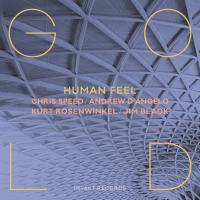 Human Feel
Human Feel Gold
Intakt
2019
Resolution: 24/88
The Zürich-based record label Intakt frequently releases albums that can be categorized as chamber jazz, notably, piano duos with various second instruments led by Irene Schweizer and Aki Takase, and new creative music from composer-improvisers Ingrid Laubrock, Sylvie Courvoisier, Tomeka Reid, Tim Berne, and Mark Feldman, among others.
In 2018, after a long hiatus, Human Feel regrouped to perform concerts in Europe. During that tour, Intakt provided the opportunity for a recording session; from the first moments of the resulting album Gold, it is clear that this band could not be mistaken for any other ensemble in creative improvisational music.
The poignant unison saxophone line that opens D'Angelo's Albert Ayler-esque tune "Alar Vome" sets up the listener for the knockdown punch of Rosenwinkel's and Black's thunderous entrance. The years may have worn down their edges, but not weakened the intensity of their attacks.
Speed's "Imaginary Friend" incorporates a bolero-like central figure on the guitar while Black pounds behind the beat, under and around Speed's post-bop solo; there's a sense of pushing past the point of exhaustion, like when you need to drag yourself away from a noisy party that's gone on too long.
Half of the pieces on Gold were composed by D'Angelo. In the interim between "Gold" and the band's previous album, D'Angelo endured a life-threatening medical trauma, and had to rebuild his playing skills over the course of a lengthy recovery. What he brings to his composition "G_D" is renewed inner strength and spiritual depth. The long opening section features Speed's wide-vibrato tenor, voicing a wordless acknowledgment of the composer's brush with mortality. The fragile beauty of the piece and the clarity of intention expressed by the players reveals the growth and continued development of the band from their earlier years.
The minimalism of "Bass Place"—two chords shimmering under a simple theme for saxophone with bass clarinet responses—is momentarily submerged in waves of crashing, distorted dissonance, that subside to the stillness of a single sustained note. That reductive strategy continues in "Eon Hit." Over Black's strong backbeat, the horns and guitar restate the opening theme in repetitive blocks. A steady buildup to higher levels of energy suddenly collapses into a static electronics-laden coda.
Of D'Angelos's final two pieces on the album, "Numer" punctuates short phrases with abrupt silences; you can hear the sound between the sounds. It's a through-composed piece shorn of any reassuring structure that seeks and succeeds in confounding the listener's expectations. The companion piece, "Ology," paints abstract sonic canvases with electronically-processed sound; a return to the formless state where creative energy arises.
Notwithstanding the band's long hiatus, the communication and responsiveness among the musicians is as immediate as in their earlier recordings. "Gold" is the refined product of that rare musical alchemy.
Track Listing
Alar Vome; Imaginary Friend; G_D; Stina Blues; Bass Place; Eon Hit; Martens; Lights Out; Numer; OlogyPersonnel
Jim Black: drums and electronics; Andrew D'Angelo: alto sax, bass clarinet; Kurt Rosenwinkel: guitar; Chris Speed: tenor sax, clarinet. Waxwing
Waxwing Flicker Down
Songlines
2021
Resolution: 24/96
On the quieter end of the chamber jazz spectrum are two ensembles whose recent albums explore the experimental side of creative chamber jazz. Lines that originate in different musical genres intersect, and the point of meeting is where Waxwing's sound begins.
Vancouver-based Waxwing, a collaborative trio of Tony Wilson, electric guitar, Jon Bentley, saxophones, and Peggy Lee, cello, follow the chamber jazz tradition of dispensing with the conventional piano-bass-drums jazz rhythm section. Their unusual instrumentation places an emphasis on middle-register voices; Wilson often plays in the guitar's middle range, strumming chords and plucking arpeggios, while Lee's cello and Bentley's tenor sax overlap the same register of orchestral pitches. This lends the trio a kind of timbral consistency that draws the listener's attention more closely into the melodic and textural weave of the music.
Waxwing have been playing together for fifteen years but have only recorded three studio albums; the appearance of Flicker Down is a welcome addition to that discography. Saxophonist Bentley produced and shaped the artistic direction of the new album through the judicious use of post-production software; as the recording progressed, he ordered the sequence of the tracks to establish a narrative flow. On two of the shorter pieces, Waxwing improvise over pre-recorded percussion tracks. Bentley describes his methodology:
"[I] constructed hybrid improv/composed-sounding songs using production software, not common to use in a trio chamber jazz setting. Many of the short pieces on the album are actually manipulated improvisations to help give them a slightly more composed feel but retaining the spontaneity and interest of the original improvisation."
Each of the members is a composer, and each has a distinctive compositional voice. Lee, who has written extensively for her own ensembles, contributes "Crossing Paths" and "Breathe," through-composed suites that provide space for Bentley's introspective tenor lines and Lee's wide palette of cello colors. On "Breathe," Bentley re-imagines Wilson's guitar solo with sophisticated signal processing.
Wilson's pieces, which comprise the longer selections on the album, draw on his experiences as a collaborative songwriter and his reach across cultural boundaries to folk music traditions and social engagement. "Flicker Down," one of the longest excursions on the album, ebbs and flows over its seven-minute length, carrying the listener along a journey through Wilson's sound landscape. The hymn-like "On This Day" would not sound out of place in a fingerpicked acoustic guitar set; Lee's cello cadenza in "Your Bet" has the character of a passage in a contemporary classical piece.
Canada's "Highway of Tears," a corridor in northern British Columbia along which dozens of indigenous women have disappeared or been found murdered, inspired Wilson's composition of the same name. The performance is suffused with sorrow and loss appropriate to the somber theme. The minor-key mood is sustained through the eight minutes of "Joe's Theme"; the players trade solos and duets in flowing digressions, returning to the main theme by tangential routes.
"Peace for Animeek," one of the software-shaped group-credited compositions, features guest flutist Miranda Clingwall, a birdlike presence flitting in and out of the processed voices of the trio. Bentley's pieces "Chasing the End" and "Parasitic," close out the album with purposeful brevity. Working within the self-imposed boundaries of a chamber jazz trio, Waxwing produce melodically inventive music that lingers in the mind long after the performance has ended.
Track Listing
Flicker Down; On this Day; Fweeo Walks By; Your Bet; Time Waited; A Day's Life; Montbretia Gates; Highway of Tears; Birds in Cages; Crossing Paths; Joe's Theme; Breathe; Invisible Something; Just Saying; Cloaks of Coax; Peace for Animeek; Chasing the End; Parasitic.Personnel
Jon Bentley: saxophones; Peggy Lee: cello; Tony Wilson: electric guitar; Miranda Clingwall: flute and space echo.The Reappearance of the Clarinet
The clarinet has enjoyed a resurgence in contemporary chamber jazz that can be traced to the legacies of new music visionaries Eric Dolphy, John Carter, and Jimmy Giuffre. Once a featured voice in jazz orchestras, the clarinet had fallen out of favor in the 1940s; a new wave of alto and tenor saxophonists swept the old-fashioned sounds of the clarinet into jazz history. Though a few musicians adapted the instrument's sound to the demands of bebop—Tony Scott, Buddy DeFranco, and the aforementioned Giuffre—the clarinet seemed trapped in the grooves of old 78s.Giuffre's 1961 trio concerts drew attention to the clarinet's capabilities in third stream-style chamber music, but it was Dolphy who pointed the way to an entirely new sound through his virtuoso bass clarinet solos and advanced harmonic language. After Dolphy's untimely death in 1964 and Giuffre's absence from performing and recording, John Carter was one of the few reeds players who committed to performing exclusively on clarinet, and to writing new compositions that suited the instrument's distinctive timbre and difficult fingerings. Carter's group handed the baton to a generation of younger players, and set the stage for the instrument's renaissance. Renewed activity in chamber jazz opened space for a wider range of instrumental sounds, and the clarinet returned to occupy its long-vacated place on the bandstand.
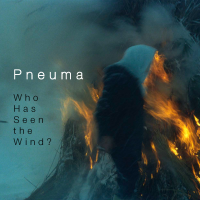 Pneuma
Pneuma Who Has Seen the Wind?
Songlines
2019
Resolution: 24/96
Who Has Seen the Wind?, compositions for vocalist and clarinet trio, is a creative chamber jazz project in the full flower of imaginative expression: music set to poems written over a wide range of eras and cultures, performed by a multinational collaborative ensemble.
"The whole idea was born from my love of Christina Rossetti's poem "Who Has Seen the Wind?," which Michael [Winograd] composed music to, and which I used as the foundation for the musical form of my mini-suite within the full set of music. To me it felt natural to "speak" through poetry and wordless sounds in this collection of songs." (Ayelet Rose Gottlieb, from an interview with Tony Reif.)
Pneuma is vocalist-composer Ayelet Rose Gottlieb and clarinetists Michael Winograd, James Falzone, and Francois Houle. Through Gottlieb's art-song vocal delivery and the three clarinetists' individual timbres and stylistic emphases, Pneuma produces a group sound that is at once diverse and unified. Winograd is well known for his work as a performer and teacher of klezmer music. A member of the Yiddish Art Trio and Tarras Band, Winograd has mastered the cantillation technique that conveys the emotive and spiritual qualities of klezmer music. Houle and Falzone are among the most forward-looking clarinetists working today. On the quartet canvas of Pneuma, they add colors of European and American jazz and art music, flawless technical virtuosity, and the ability to surprise the listener with unexpected turns of phrase. Houle's albums for Songlines cover a wide range of musical territory, from 1998's In the Vernacular: The Music of John Carter to his recent album with Gordon Grdina and Mark Helias, Recoder. Falzone, formerly based in Chicago and more recently in Washington State, releases music on his own label, Allos Documents. On the 24/96 release The Room Is, Falzone leads the all-star woodwind ensemble Renga through a set of haiku-inspired new music performances. His command of the possibilities of a clarinet ensemble is evident throughout Who Has Seen the Wind?.
In "Alone," a setting of James Joyce, the lyric "The sly reeds whisper to the night" could serve as an emblem of the relationship between the clarinet voices and Gottlieb's twilight-hued vocals. "Trembling—Light" uses sampling and signal processing on the clarinets to set a spectral background for the impassioned vocal lines. The song grows out of an experience of grief for the loss of a friend; an intuition of the immanence of death in life runs throughout the album. Gottlieb's grandfather Harry was an amateur clarinetist; she writes in the liner notes of her recollections of him playing with aging, trembling hands. In "Passing Through -Lament for Harry," Winograd's plaintive solo seems to summon the communal spirit of the ancestors. In "Neither you nor I," the three clarinets speak to each other in what Houle calls 'clarinet language.'
Mayumi Terada's "The Shape of Tears" describes the poet's response to the death of her lover, an inquiry into the physical traces that linger: "three copies of the same book on the shelf/the secret self he left behind..." There's a cool, almost dispassionate tone to the lyrics, sung over the limpid tones of the clarinets; time seems to pause, until the moment of reflection passes.
Pneuma creates music of depth, compelling logic, and heartfelt inspiration. Who Has Seen the Wind? is a unique album, fusing lyric poetry to the poetic lyricism of chamber jazz.
Track Listing
Alone; Neither I nor You/Pneuma; Trembling/Light; Passing Through/Lament for Harry; Neither You nor I/Conversation with Ora; Bow Down/The Wind Will Take Us; Passing By/The Shape of Tears; Who Has Seen the Wind?; Wakened by the Scent; Who Can Say What Loneliness Is; Ruined House; This Pine Tree ; The Last Rose of Summer.Personnel
Ayelet Rose Gottlieb: voice; James Falzone: clarinet, Eb clarinet, shruti box; François Houle: clarinet, electronics; Michael Winograd: clarinet.Tags
About Human Feel
Instrument: Band / ensemble / orchestra
PREVIOUS / NEXT
Support All About Jazz
 All About Jazz has been a pillar of jazz since 1995, championing it as an art form and, more importantly, supporting the musicians who make it. Our enduring commitment has made "AAJ" one of the most culturally important websites of its kind, read by hundreds of thousands of fans, musicians and industry figures every month.
All About Jazz has been a pillar of jazz since 1995, championing it as an art form and, more importantly, supporting the musicians who make it. Our enduring commitment has made "AAJ" one of the most culturally important websites of its kind, read by hundreds of thousands of fans, musicians and industry figures every month.










